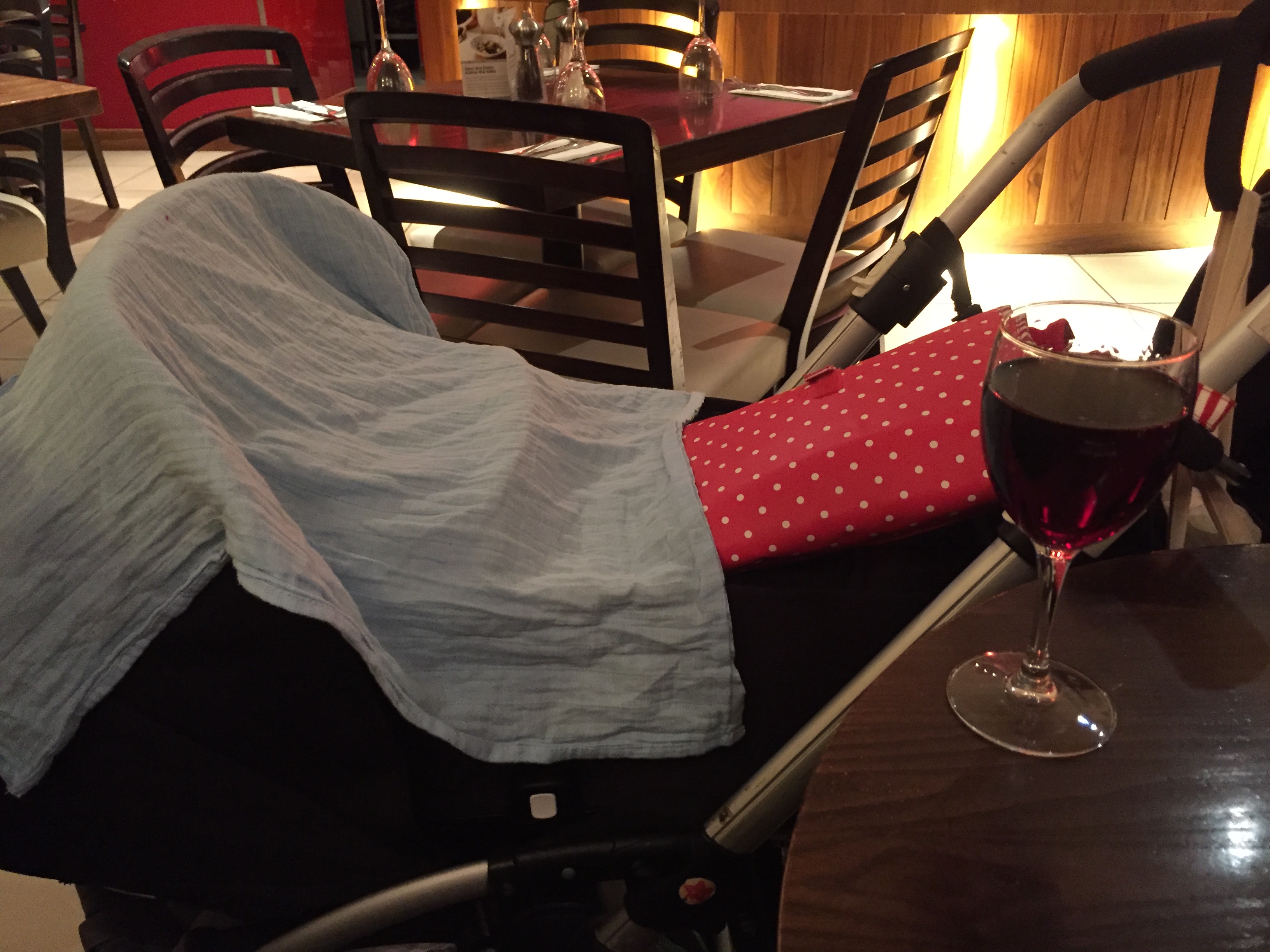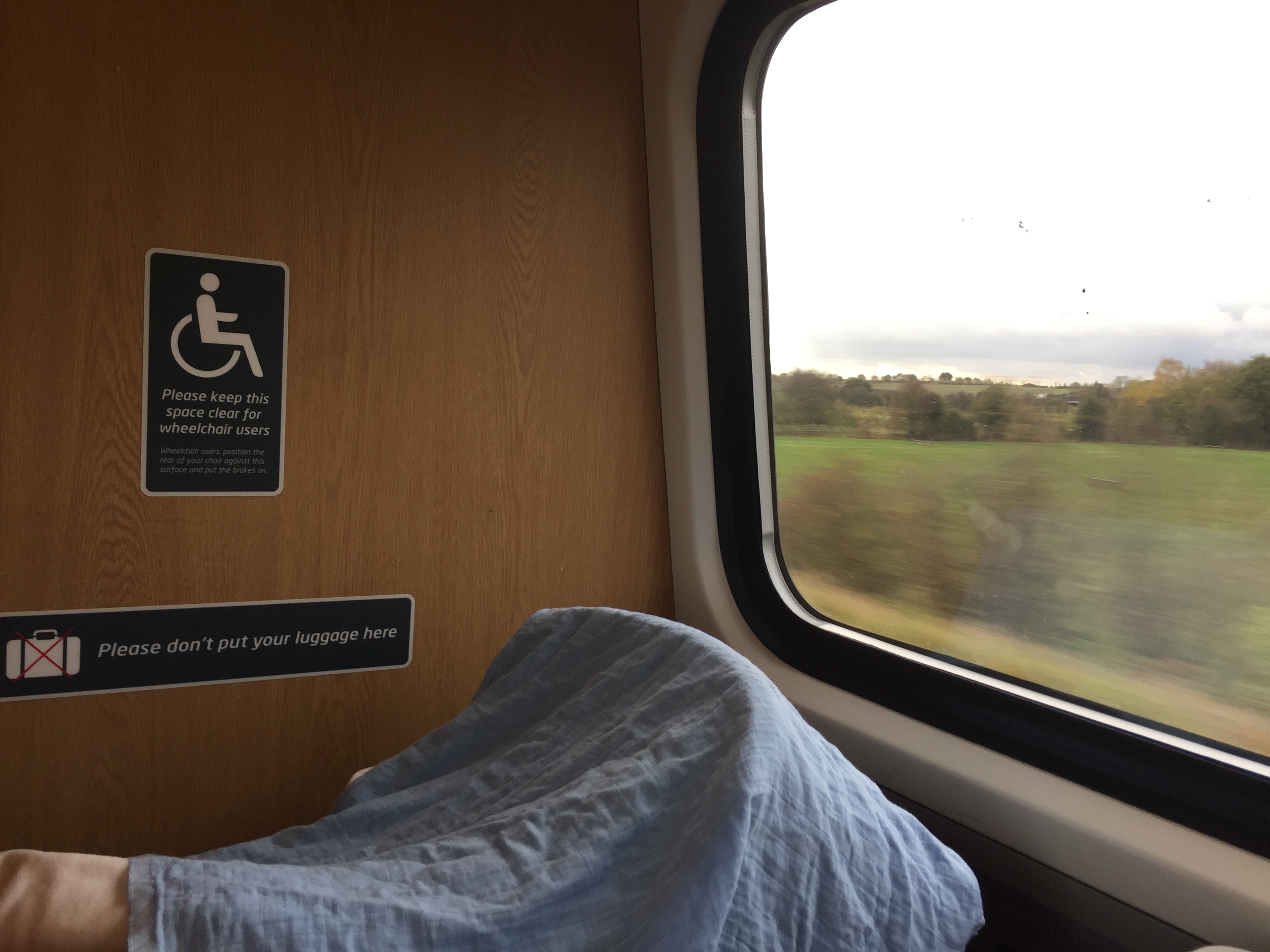Eating out with a baby or toddler can be a stressful experience, so your choice of eatery is paramount. You’d be surprised by how many cafes and restaurants are welcoming to children, but there’s nothing worse than dealing with a grumpy/messy/loud baby or toddler while restaurant staff and other patrons give you evils. If you get a bad feeling about a place when you arrive with your offspring in tow, trust your gut and go somewhere else (if there are no other options available, apologise in advance, cross your fingers and grit your teeth). If in doubt – and it pains me to say this, because I’m a big cheerleader for independent businesses – opt for a chain, in the UK at least, as they tend to be child-friendly and well equipped.
A high chair isn’t essential, but having one will make your life considerably easier. If there’s not one available, pick a table with enough space to park your pushchair right up against it and leave your baby strapped in while you feed her. (Having the pushchair close by is helpful, even if you do have a high chair, as it means you’ve got everything to hand when you need it; it also avoids having to wake your little one up if she’s napping when you arrive.)
For trips away where you’re going to be eating out a lot – or if you know in advance that the venue has no high chair available – bring a portable high chair. Ones that clip onto the table are great because your baby will be at the right height, but they’re a pain to clean; plastic ones that strap onto the chair are easy to wipe down, but bulky to carry; and fabric ones that slip over the back of the chair are super light, but mean your baby will be at eye level with the table. Another option is a lap belt, which keeps her securely on your lap but allows you the use of your hands.
Check out the baby change situation before you commit – changing your little one on the floor of a toilet cubicle isn’t a pleasant experience, especially once she’s at the stage of trying to escape while you’re at it. If you’re travelling in the UK, the NCT has a handy app that shows you nearby restaurants (and other places) with baby change facilities.
I’ve never had an issue getting restaurant or café staff to provide hot water to heat up milk or baby food, but it’s best to ask about this as you’re being seated, just in case. Bringing food in from outside can feel a bit awkward, but I’ve never had any pushback on this either. The older the baby girl gets the odder it feels, so these days I try to order something for myself I know she’ll eat rather than lay out a baby food picnic. It’s worth bearing in mind though that restaurant food tends to be saltier than ideal for babies, particularly those under 12 months – fine now and again but not something you want to be doing every day.
It’s all rather simpler for smaller babies, so make the most of this stage, before your infant becomes an unruly toddler. Taking your baby in a sling (you can find my post on this piece of essential kit here) rather than a pushchair increases your options as you don’t need to worry about there being space to park it – and time it right and you might even get her to sleep through an entire meal.
The choice of table is important: if one of your party is breastfeeding, a chair with a back makes for a much more comfortable experience; and sitting with your back to the room allows for greater privacy while breastfeeding. (I’m very pro breastfeeding in public and in no way advocate women hiding themselves away while feeding their babies, but sometimes you’re just not in the mood to show your boobs to an entire restaurant.)
Wherever you’re sitting, consider your escape route for that moment when your baby kicks off and needs jiggling and pacing to calm down – assuming it’s not freezing cold or pouring with rain, outside, away from the gaze and eardrums of other diners, is often less stressful than in. In warm weather I’d always go for an outside table when given the option, for this very reason – in fact I’d go for an outside table with a bigger baby or toddler too, as there’s less of an issue of them making a mess outdoors.
Whatever the age of your child, it helps to manage your own expectations before you set off – meals out with babies and toddlers can be fun, chaotic (in a good way) and sociable, but they’re never relaxing. Be prepared for the worst and you might just have a good time.

Tag: bottle
Train journeys with babies and toddlers
It pays to be very organised when it comes to taking a baby or toddler on a train, particularly if it’s going to be a long journey. Not all train companies will let you reserve a seat, and even the train companies that do don’t necessarily offer reservations on all their routes, but if you can book a seat, you should.
And the seat you should book, if it’s possible to specify (you can when booking direct through the Virgin trains website, for example, right at the very end of the booking process, or in person or on the phone with Great Western Railway), is one of ones closest to the wheelchair accessible seats. That way, if there’s no wheelchair user on your train, you can park the pushchair – unfolded – in the wheelchair space (it goes without saying that if a wheelchair user gets on, you have to give up the area for them). This avoids the faff of folding and stowing the pushchair in the luggage rack, but it also means you’ve got a place to put your baby down for a nap during the journey if need be. The wheelchair seats are also the closest to the disabled toilet, which is where you’ll usually find the baby change.

If you can’t choose your actual seats when making a reservation (the case with the majority of operators), the next best thing is to select the ‘near the toilet’ option, as this will at least mean that you’ll be as close to the end of the carriage as possible. You might then have the option of leaving the pushchair unfolded, and standing with it while your baby sleeps, while at the same time keeping an eye on your stuff (less of an issue if you’re travelling with someone else of course).
This plan won’t work if the space between the carriages is small or if the train is busy, so be prepared to fold your pushchair. The underneath of the baby girl’s pushchair is perpetually in chaos, making it difficult to fold in a hurry, so before I set out on a train journey I try to remember to do an audit, taking out the non-essentials and making sure all the bits and bobs I might need are in one bag that I can quickly grab out of the pushchair and take with me to my seat. Travelling off-peak is always going to be preferable, but if that’s not an option consider leaving the pushchair at home. If you can get away with a sling instead you’ll have a much less stressful experience on a busy train.

In situations where you haven’t been able to reserve the seat you want, get to the platform as early as possible and ask a member of staff where the carriage with the wheelchair seats will be stopping, so you can be first to those seats. There’s a website and app called Realtime Trains that train staff use to get advance information on which platform trains are coming into – it’s a useful way to get ahead of the crowd on busy routes.
Once you’re seated, other things to consider are food and activities. I learnt the hard way that the staff in the café carriage can’t heat up baby food for you in the microwave – the ones on trains are too powerful apparently. They’ll give you hot water though, so heating up milk isn’t a problem. If you want to give your child hot solid food, pouches are a good idea.
A quick note about milk while I’m on the topic – while I’ve found breastfeeding to be far and away the most convenient option when it comes to travelling with a baby, the one situation in which I was glad to have a bottle with me was on an extremely busy train on the way to Hull when the baby girl was seven-weeks-old. It’s not impossible to breastfeed standing up on a tightly packed train, but it’s not ideal, especially if you’ve also got a couple of bags with you.
As far as activities are concerned, bring as many books and toys as you can bear to carry – it’s stating the obvious, but long train journeys are boring for small children. If you’ve nabbed those coveted wheelchair seats, put a picnic blanket on the floor to make a play area. The baby girl is only happy sitting on my lap for so long, and when she wants to be on the move, it’s easier to let that happen than to fight it.
Once you’ve reached your destination you may need to take a bus or, if you’re in London, the Underground. Check out my post on navigating public transport with a pushchair for tips on how to do that.
